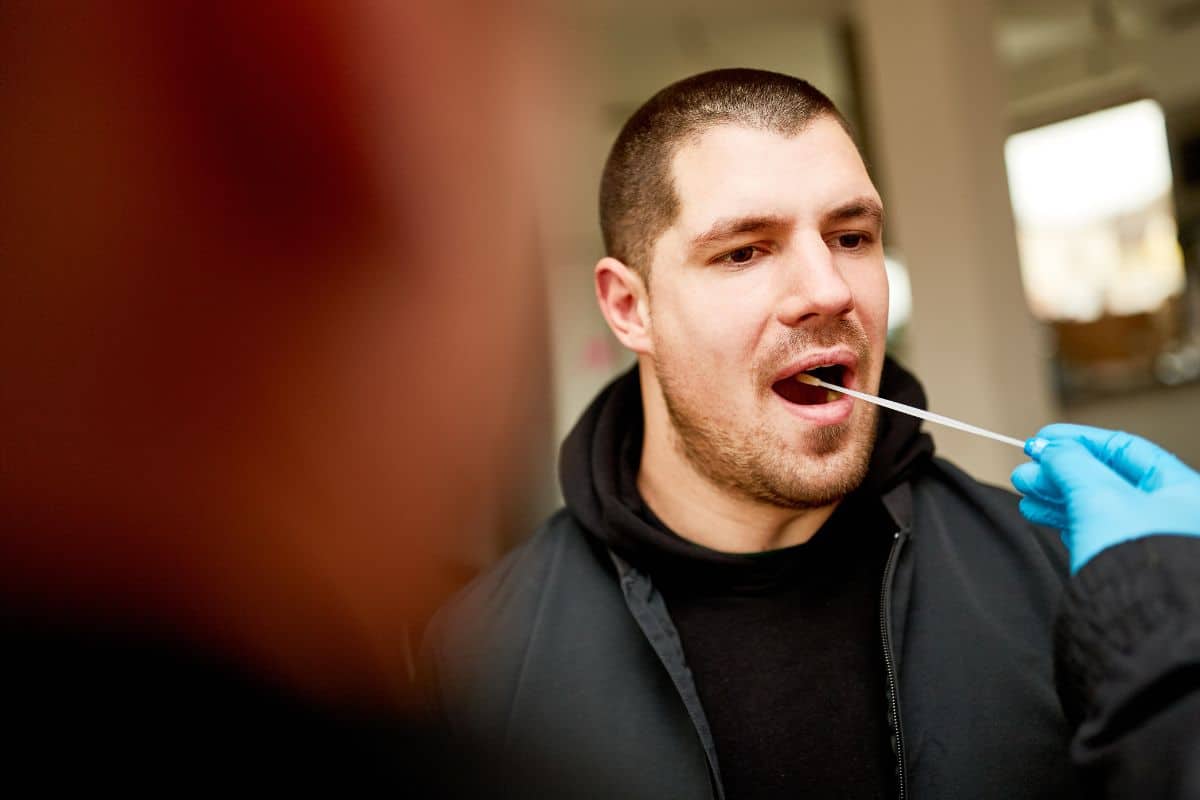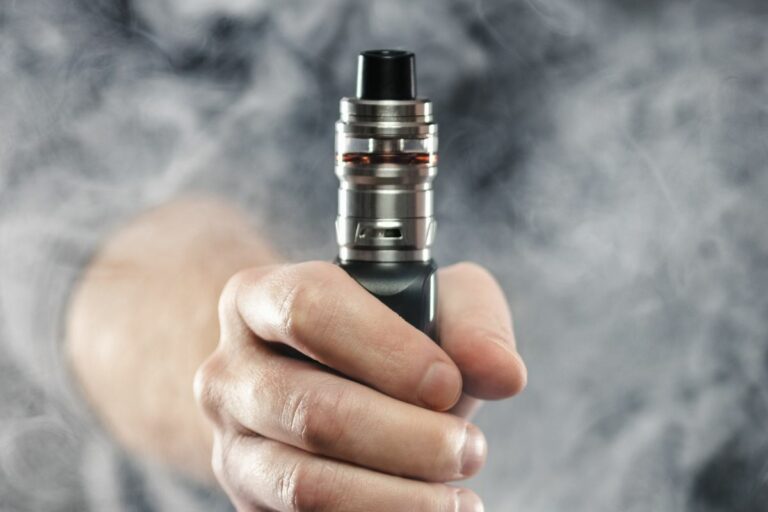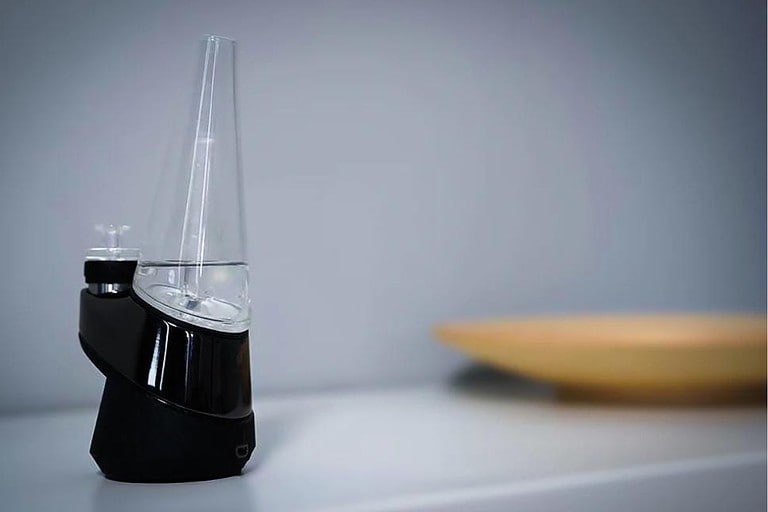How Long Does THC Stay in Saliva: Essential Information and Factors
The consumption of cannabis has become more prevalent in recent years, leading to a growing interest in understanding its effects on the body and how long it can be detected through various methods. One such method is testing for the presence of tetrahydrocannabinol (THC) in saliva. THC, the primary psychoactive compound in marijuana, can show up in saliva and offer insight into recent cannabis use. Knowing the duration THC remains detectable in saliva is essential for drug screening, legal matters, and individual awareness.
Saliva tests are convenient, non-invasive, and provide a relatively quick way of detecting the presence of THC. The duration THC remains in saliva can vary based on factors such as frequency and amount of cannabis consumption, individual metabolism, and the sensitivity of the testing method employed. However, it’s generally accepted that THC can typically be detected in saliva for up to 3-5 hours after smoking Detection of Recent Cannabis Use by Saliva Δ9-THC Radioimmunoassay. It’s important to consider these factors when interpreting saliva test results and when providing guidance on cannabis consumption for personal or professional purposes.
Table of Contents
THC and Saliva
THC, or tetrahydrocannabinol, is the primary psychoactive compound found in marijuana. When cannabis is smoked or vaporized, THC enters the bloodstream and eventually reaches the liver, where it’s broken down into various metabolites. One of those metabolites, THC-COOH, can be detected in saliva, which is why saliva tests are often used to determine recent cannabis use.
The duration that THC can be detected in saliva largely depends on the individual and their pattern of marijuana use. In general, THC levels in saliva are at their highest shortly after smoking, and decline over time. For infrequent users, THC can typically be detected in saliva for up to 24 hours after use. However, for frequent users, it may be detectable for a longer period, sometimes up to 72 hours or more.
In a study on saliva Δ9-THC radioimmunoassay, it was found that THC levels in saliva remain elevated for 3-5 hours after smoking, confirming recent exposure to marijuana. However, this study also highlights the need for confirmatory tests as THC-COOH may not always be transferred from blood to saliva.
Several on-site testing devices have been developed to detect THC in saliva samples. For example, the Cozart RapiScan THC Saliva test has been used in various blind trials to detect THC in saliva following cannabis consumption. These tests can provide rapid and non-invasive means of screening for recent cannabis use.
It’s important to note that various factors such as hydration, oral hygiene, and smoking habits can influence the concentration of THC and other cannabinoids in saliva. Additionally, the stability of THC in saliva samples can be affected by storage conditions, as observed in a study where THC levels in samples stored at -18C showed significant variations.
In summary, the detection of THC in saliva can be a useful tool for determining recent cannabis use. However, individual factors and testing methods can influence the accuracy of the results, necessitating confirmatory tests when necessary.
NEW CUSTOMER DISCOUNT
Save 15%
15% OFF YOUR ENTIRE ORDER FOR NEW CUSTOMERS USE CODE WELCOME15!
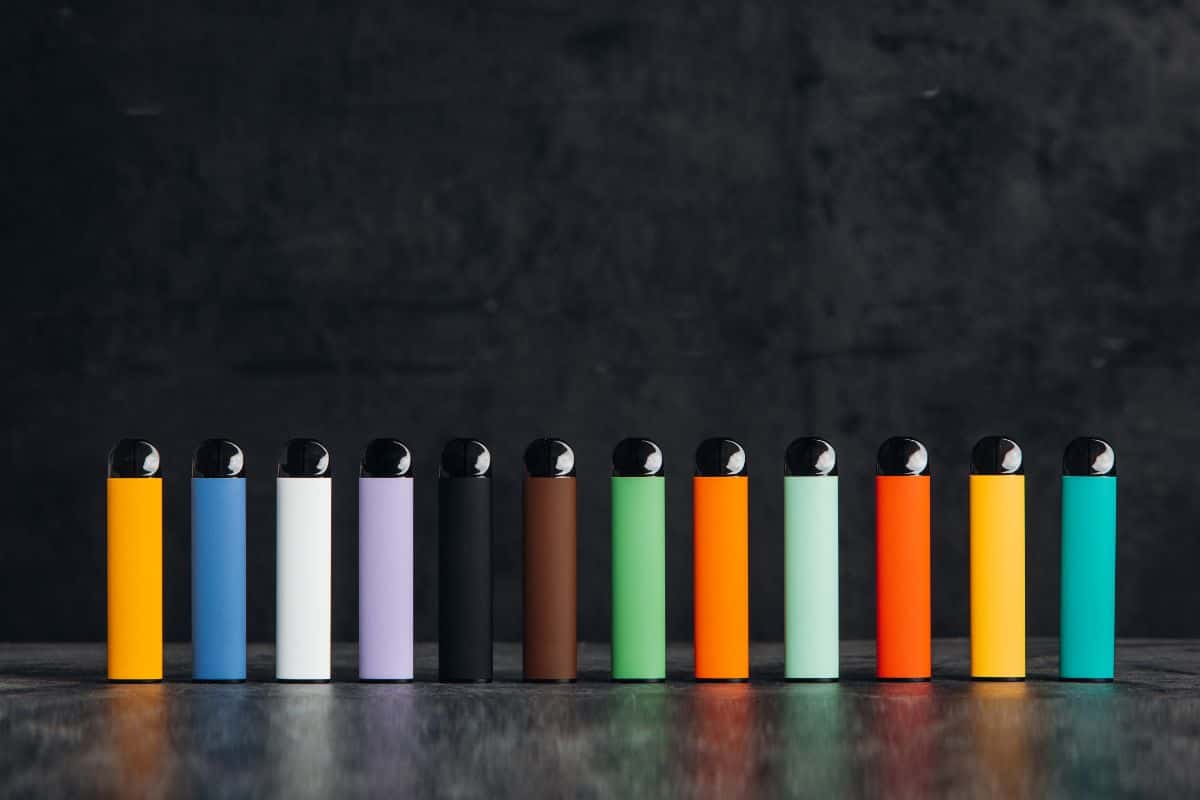
Factors Affecting THC Detection in Saliva
There are several factors that can affect the detection of THC in saliva. These factors include:
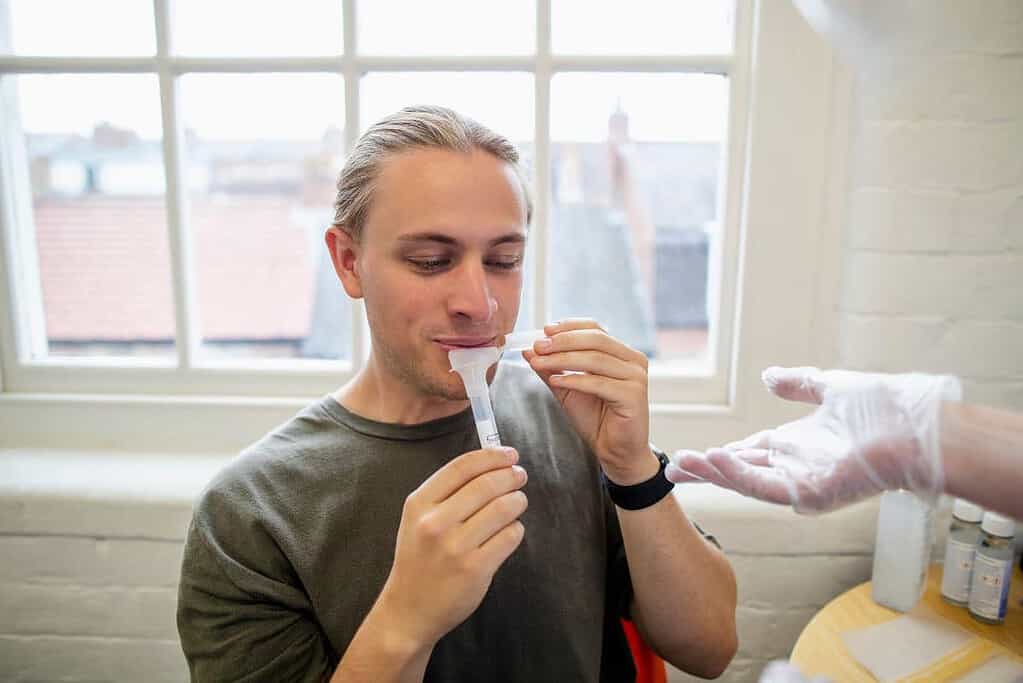
Frequency of Use
The frequency of marijuana use plays a significant role in how long THC can be detected in saliva. Regular users may have a longer detection window than occasional or first-time users. This is because THC accumulates in the body with consistent use, resulting in a higher concentration of the compound in saliva.
Metabolism
Individuals with faster metabolism rates may clear THC from their system more quickly than those with slower metabolisms. Metabolism is influenced by factors such as genetics and overall health. People with higher levels of physical activity tend to have faster metabolisms, which can result in a shorter detection window for THC in saliva.
Age
As people age, their metabolism generally slows down, affecting the rate at which THC is cleared from their body. Older individuals may therefore have a longer detection window for THC in their saliva compared to younger people.
Hydration
A person’s hydration level can influence the concentration of THC in saliva. Proper hydration can help dilute the presence of THC in the body, potentially shortening its detection window. On the other hand, dehydration can concentrate THC levels in the saliva, making it more readily detectable.
Body Fat
THC is a lipophilic compound, meaning it is stored in fat cells. Individuals with higher body fat percentages may retain THC in their system for a longer period of time. As a result, the detection window for THC in saliva may be longer for individuals with more body fat.
Diet and Exercise
A healthy diet and regular exercise can facilitate faster metabolism, which in turn, can help the body clear THC more quickly. Eating a diet rich in fiber and exercising regularly can aid in the elimination of waste products, including THC metabolites, from the body. This can potentially reduce the detection window of THC in saliva.
In conclusion, the duration for which THC remains detectable in saliva can vary greatly depending on factors such as frequency of use, metabolism, age, hydration, body fat, diet, and exercise. Therefore, there is no one-size-fits-all answer to how long THC stays in saliva.
Saliva Drug Testing
Detection Window
Saliva drug tests are commonly used for detecting recent marijuana use with a detection window of up to 72 hours, depending on factors such as frequency and amount of use. THC, the main psychoactive component in marijuana, is rapidly absorbed into the bloodstream and can be detected in saliva within minutes of use.
Accuracy
Saliva drug tests have shown to be quite accurate, with some studies suggesting a correlation with plasma drug levels. The tests use the principle of lateral flow immunoassay to detect the presence of drugs in the sample quickly and reliably. Factors such as salivary pH have been found to influence the concentration of some drugs, but this doesn’t significantly affect the test’s accuracy for THC detection.
Testing Procedure
The saliva drug testing procedure is non-invasive and primarily involves collecting a saliva sample from the individual. Typically, a sterile swab or absorbent pad is used to collect the sample by wiping it inside the individual’s mouth. Once the sample is collected, it’s sent to a testing facility for analysis. Results are usually available within a few hours to a few days, depending on the testing facility’s turnaround time.
Cost
The cost of a saliva drug test can vary based on factors such as the testing company, the number of substances tested, and additional services requested. However, on average, saliva drug tests tend to be more cost-effective compared to other testing methods such as blood or urine tests. Employers often choose saliva tests for their affordability and quick results, making them popular for pre-employment and random drug testing.
Privacy
Saliva drug testing offers a significant advantage in privacy compared to other drug testing methods. The collection process is less invasive, and there is a reduced risk of sample tampering. Additionally, the test does not detect drug metabolites that may remain in the body for extended periods, thus focusing on recent drug use rather than past use, which is less likely to infringe on an individual’s privacy.
Comparing Detection Times for THC
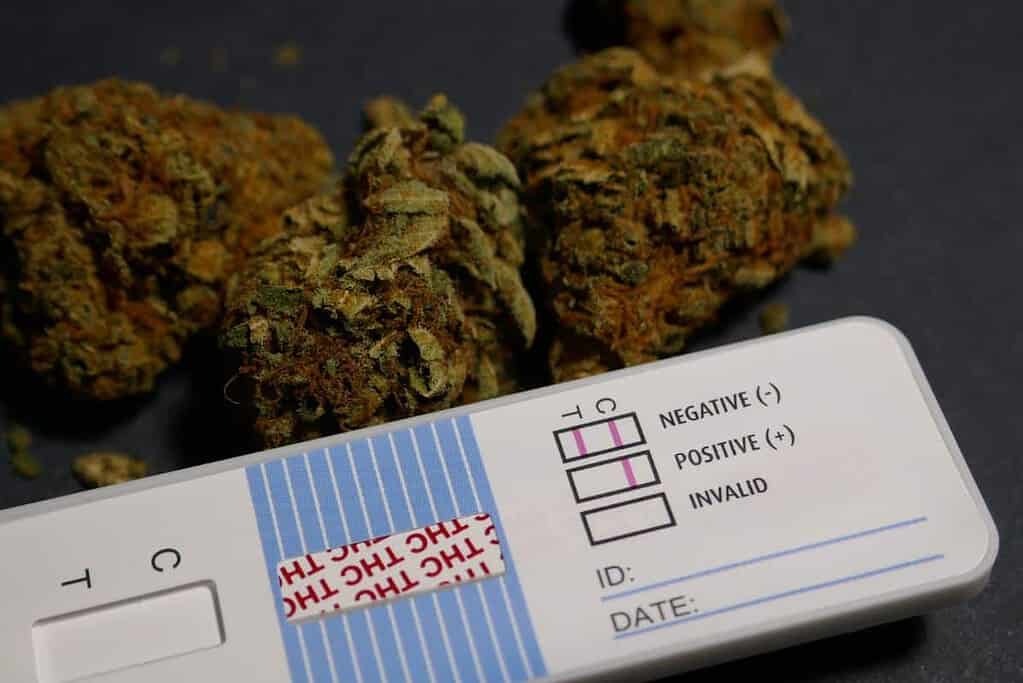
Blood Tests
Blood tests are commonly used to detect the presence of THC in the bloodstream. THC can be found in the blood within minutes of smoking and may be detected for up to several hours after last use. However, the detection window for blood tests is relatively short. For occasional users, THC is typically detectable in blood for 1-2 days, while for heavy users, it may remain detectable for up to 7 days. It is important to note that these time frames are approximate and can vary depending on individual factors such as metabolism and frequency of use.
Urine Tests
Urine tests are the most popular method for detecting cannabis use due to their ease of use and longer detection windows. THC is broken down into metabolites, such as THC-COOH, which are stored in fat cells and gradually excreted in urine. For occasional users, THC metabolites can be detected in urine for 3-7 days after last use, whereas for regular users, detection times can range from 10-30 days or even longer. The actual detection time depends on individual factors like metabolism, body fat, and frequency and duration of cannabis use.
Hair Tests
Hair tests offer a significantly longer detection window compared to blood and urine tests. THC metabolites are incorporated into hair follicles and can be detected in hair for up to 90 days after last use, regardless of the frequency of use. The hair test typically requires a 1.5-inch hair sample, representing approximately three months of growth. However, hair tests can show a level of usage over time but may not be well-suited for detecting recent or one-time cannabis use, as it takes time for THC metabolites to be incorporated into the hair shaft.
False Positives and Other Substances

CBD and THC
While testing for THC in saliva, there might be concerns regarding the potential for false positives due to the presence of Cannabidiol (CBD), a non-psychoactive component of cannabis. However, the tests are generally designed to specifically detect THC and not CBD, reducing the likelihood of a false positive result due to CBD presence.
Medications
Certain medications are known to cause false positives in drug tests. For example, some over-the-counter antihistamines and certain prescription medications can cause false positives for amphetamines. However, these cases are generally rare and test administrators are aware of potential interferences.
Other Drugs
As with any drug test, there might be instances of false positives or negatives for a variety of reasons. In the context of saliva drug tests for THC, some factors include the presence of other drugs, such as cocaine, methamphetamine, MDMA, and opiates. One study found that while saliva tests are considered near perfect for detecting recent cannabis use, there were some occurrences of false positives related to cannabis, cocaine, and amphetamines.
In general, the risk for false positives depends on the individual test and its specificity. It is important to keep these possibilities in mind when interpreting saliva test results for THC and be aware that factors like certain medications and the presence of other drugs can potentially lead to inaccurate results.
Detection Windows and Mental Health Services Administration Guidelines
The detection window for THC in saliva varies based on a variety of factors, including the frequency of use, dosage, and individual metabolism. It is generally believed that THC can be detected in saliva for a shorter period of time compared to other biological samples, such as urine or blood. Recent research suggests that the detection window for oral fluid may be a viable option for roadside testing.
The Substance Abuse and Mental Health Services Administration (SAMHSA) is responsible for establishing guidelines related to workplace drug testing. While SAMHSA guidelines primarily focus on urine testing, alternative specimens like saliva have recently gained attention for their potential use in drug testing. The Mental Health Services Administration guidelines provide cut-off criteria for the detection of various drugs, including THC, in saliva samples.
Saliva testing offers several advantages over other testing methods, such as ease of collection and minimal invasiveness. Moreover, it is difficult to adulterate a saliva sample, which makes it an attractive choice for on-the-spot roadside testing. However, the detection window in saliva may not be suitable for all testing purposes, especially in cases where longer detection windows are required.
In conclusion, the detection window for THC in saliva is still a subject of ongoing research and can vary based on several factors. The Mental Health Services Administration guidelines outline the cut-off criteria for detecting THC in saliva samples, making it a viable option for some drug testing applications. Nevertheless, users should bear in mind the limitations of saliva testing and consider using other biological samples when longer detection windows are necessary.
Browse popular vape collections:
- Nicotine Disposables
- 2000 Puff Nicotine Disposable Vapes
- 2500 Puff Nicotine Disposable Vapes
- 5000 Puff Nicotine Disposable Vapes
- 6000 Puff Disposable Nicotine Vapes
- 7000 Puff Nicotine Disposable Vapes
- Disposable Vape Deals
- Best Vape Brands
- 8000 Puff Nicotine Disposable Vapes
- 9000 Puff Nicotine Disposable Vapes
- 5% Nicotine Disposable Vapes
- Rechargeable Nicotine Disposable Vapes
- Vape Coils
- Dab Wax Pens
- Dab Wax Pen Battery
- Yocan Vapes
- Vape Cases
Frequently Asked Questions
How long do mouth swab drug tests detect THC?
Mouth swab drug tests, also known as saliva tests, can typically detect THC within 24 to 72 hours after use. However, this time frame might vary because of individual factors like metabolism and frequency of use. Some users might test positive for THC even after a week of consumption.
When does THC become undetectable in saliva?
THC can become undetectable in saliva after a few days to a week for occasional users, while heavy or regular users may take longer to clear. The exact time depends on several factors, including the individual’s metabolism, body fat, and frequency of use.
Do saliva tests differentiate THC and Delta 8?
Saliva tests may not differentiate between THC and Delta 8 due to their similar chemical structures. However, some advanced tests may be able to distinguish between the two cannabinoids. Ensure that you are aware of the type of test being used and its ability to differentiate between THC and Delta 8.
What factors influence THC clearance from saliva?
Several factors can influence how quickly THC is cleared from saliva, including an individual’s metabolism, body fat, frequency and duration of use, and the potency of the cannabis product consumed. Hydration levels, exercise, and diet may also play a role in THC clearance.
How to speed up the elimination of THC from saliva?
To speed up the elimination of THC from saliva, stay hydrated, maintain a healthy diet, and exercise regularly. These actions can help boost your metabolism, thus potentially reducing the time it takes for THC to clear from your system. However, the most effective way to eliminate THC is to stop using cannabis products altogether.
Can secondhand smoke affect a saliva THC test?
Yes, exposure to secondhand smoke can potentially lead to a positive saliva THC test. However, the likelihood is relatively low and generally requires significant exposure to smoke in poorly ventilated spaces. It is always best to avoid contact with secondhand cannabis smoke if you are concerned about passing a saliva drug test.

